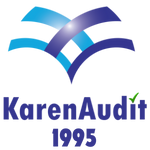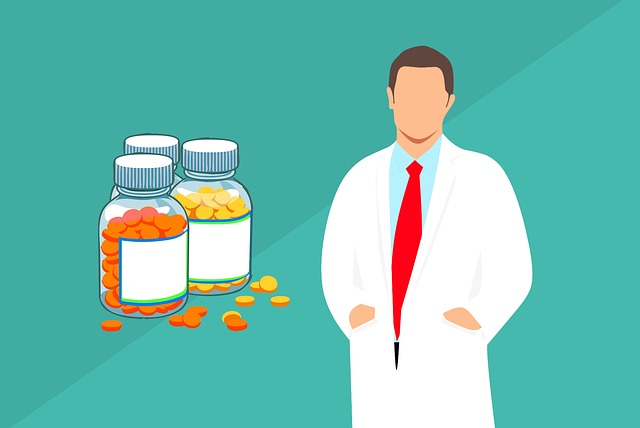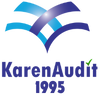25.08.2020
PHARMACEUTICAL INDUSTRY IN TURKEY
Production of pharmaceutical preparations done in pharmaceuticals laboratories between 1928 and 1950 had increased with the establishment of local and foreign invested plants starting from the year 1952, which is the start of the “fabrication period” of the Turkish pharmaceuticals industry.
Within the period after 1984 up to the present, investments of foreign capital companies have increased and especially after the year 1990, 19 foreign capital firms have entered into Turkish pharmaceuticals market.
Today, there are 53 manufacturing facilities and approximately 300 entities operating in the sector in Turkey. 39 of the manufacturing facilities are local firms. On the other hand, multinational firms own 14 of the manufacturing facilities and 134 of the entities.
Pharmaceutical industry has a production structure comprised of high level of technology and automation. Approximately 31.000 people are employed in the sector. Pharmaceuticals industry, due to its nature, is one of the industries which has a high proportion of personnel with university education (50%).
Turkish pharmaceutical industry is mainly located in the Marmara Region especially in provinces of Istanbul, Kocaeli and Tekirdağ. This is mainly due to the better infrastructure, ease of supply in packaging materials and technical personnel, telecommunication and transportation facilities and the existence of a high number of health institutions in the region.
The Turkish pharmaceutical industry has a well-organized structure. Most of the manufacturers and exporters have been organized under the roof of “The Pharmaceutical Manufacturers Association of Turkey” (İlaç Endüstrisi İşverenler Sendikası).
PRODUCTION
According to IMS (International Medical Statistics) data, the sector has reached a total Sunday volume of US $ 1.2 trillion with a growth rate of 5% in 2018, with 95% of the world pharmaceutical market owned by internationally-owned companies. In 2018, the U.S. accounts for about 40% ($485 billion) of world pharmaceutical sales, China 11% ($132 billion) and Japan 7% ($86 billion), with the top three countries accounting for almost half of the world Sunday Share. In the coming period, the growth trend in the pharmaceutical sector, which is the third largest sector in the world, is expected to continue and the sector will reach a Sunday size of over 1.5 trillion dollars by 2023.
As of the end of 2018, 48% of the world pharmaceutical Sunday production is made up by North American countries, while 22% is made up by European countries. In recent years, developing countries such as Brazil, India, Russia and China have also come to the fore in Sunday distribution. Although it is predicted that the US will continue to be at the top of global pharmaceutical sales in the coming period, the share of developing countries outside the US is also expected to increase. (IQVIA, IEIS)
In 2018, 17.5% of total R & D spending in the world was carried out by the pharmaceutical sector. Drug R & D expenditures require a long process and high cost, the conversion of a molecule into a human drug can take an average of 10-15 years and requires high investment amounts. As of the end of 2018, Global R & D expenditures of the pharmaceutical sector amounted to approximately US $ 179 billion. Global R & D expenditures are expected to reach $ 204 billion in 2024. Pharmaceutical consumption in Turkey, by therapeutic class, includes antibiotics, cardiovasculars, antirheumatics, nervous systemics and oncologics.
In recent years, there has been a trend towards biotechnological products in the world and the share of products produced by synthesis chemistry in the pharmaceutical market has been declining. In our country, it is of great importance to turn to biotechnological products in accordance with this trend. The Turkish biotech pharmaceutical market reached TL 5.4 billion in 2018, corresponding to approximately 17% of the total prescription drug market. The share of biotechnological drugs within the total prescription drug market is steadily increasing, similar to the trend around the world. In the same year, the total biosimilar drug market increased by 48% compared to the previous year, reaching approximately TL 282 million.
The production of raw materials in Turkey concentrates on the active ingredients of antibiotics and analgesics, by using the methods of fermentation, extraction and synthesis.
Within the Turkish pharmaceutical raw materials sector, 11 plants are owned by the private sector.
The production and marketing of all pharmaceuticals in Turkey are obliged to be authorized by the Turkish Ministry of Health, and pharmaceutical products and firms must be registered in the Ministry.
The Turkish government has implemented a number of regulations to bring its pharmaceutical laws into line with those in the EU.
- Patent protection
- Data exclusivity
- Pricing
- Registration
- Good Manufacturing Practices(GMP)
- Good Laboratory Practices (GLP)
- Good Clinical Practices (GCP)
- Bioavailability / Bio equivalency
- Packaging Labelling
- Promotion / Advertising
- Drug Research and Medicinal Product Registration
- Stability Requirements
- Regulation on Good Distribution and Storage Practices
- Pharmacovigilance
Since 1995, pharmaceutical manufacturers have to abide by regulations specifying Good Manufacturing Practices (GMP), Good Laboratory Practices (GLP) and Good Clinical Practices (GCP) requiring significant investment by local industry companies. The necessary investments for the development of technology in the industry have been accelerated and today the production technology of the Turkish pharmaceutical industry has reached world standards.
PHARMACEUTICAL AND PHARMACEUTICAL PRODUCTS SECTOR IN TURKEY
Exports
Turkish exports have shown a steady increase in recent years, although in 2018, the total value of the pharmaceuticals exports decline to US $ 1,2 billion, in 2019 the total value of pharmaceuticals export increased to US $ 1,3 billion (Table 1).
Turkey is now exporting various pharmaceutical products to 180 countries including developed countries like South Korea, Switzerland, Poland, Slovenia, Germany, the UK, the USA and Georgia (Table 2).



TIM 2023 Export target for 2023 as part of a strategy 3.3 billion US dollars is designated as the drugs and pharmaceuticals sector, and the sector in question within the scope of the relevant exporters General Secretariat of Istanbul mineral and metals exporters ‘association (IMMIB) with the general secretariat of Mediterranean Exporters’ Union (AKIB) General Secretariat has been designated as.
On the other hand, organizations such as the pharmaceutical industry employers ‘ union (IEIS), the Health Products Association and the Pharmaceutical Industry Association of Turkey (TISD), which serve the Turkish pharmaceutical sector, serve as a reference institution for both the public and private sectors through their activities.
Source: Data pf Ministry of Trade of the Republic of Turkey
Legal Notice: The information in this article is intended for information purposes only. It is not intended for professional information purposes specific to a person or an institution. Every institution has different requirements because of its own circumstances even though they bear a resemblance to each other. Consequently, it is your interest to consult on an expert before taking a decision based on information stated in this article and putting into practice. Neither Karen Audit nor related person or institutions are not responsible for any damages or losses that might occur in consequence of the use of the information in this article by private or formal, real or legal person and institutions.






